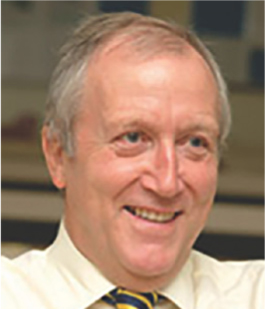Article

Discussion on how to achieve a preventive mindset among clinicians has been taking place for, it seems, decades. It is the ultimate in minimally invasive dentistry, which has been much talked about/written about since the COVID-19 crisis caused a rethink on dental operative procedures. Why, you may ask, do dental schools have vast areas set aside for restorative dentistry, when there is nothing resembling a total preventive clinic? Hume, in 1992, described this phenomenon as a ‘restorative tiger’ that needed ‘taming and turning’.1 And, I am sure that, had GV Black (probably best known for his principles of cavity preparation) been alive today, he would have agreed with such comments, given his statement in 1896 ‘the day is surely coming when we will be practising preventive rather than reparative dentistry’.
At a time when there has been much head-scratching regarding aerosol production (well discussed in the last issue in the paper by Prof Samaranayake2), the alternative approach, already proposed by me and my co-authors two issues back3 (seems like a lifetime!), is to utilize procedures which don't involve an aerosol, but the alternative proposal, which is to concentrate even more on prevention. Have all our patients been taught an effective method of plaque control? Orthodontists, I know, will not proceed with treatment until their prospective patient undertakes a session of Oral Health Instruction. Why should patients undergoing operative treatment for caries be different? They should have the same instruction.
A problem, as I see it, relates to the question – who will pay? This is not only a UK problem, but one which has not been addressed by governments worldwide. The majority remain hooked on the principle of not paying for what they cannot see. And, hence, if prevention works, then the patient and clinician see – nothing! – no demineralization, no cavity, nothing but sound enamel. When we have sorted out a way to pay, then prevention will be supreme. Capitation, as a method of payment, works for motivated patients, because they take the preventive message on board. Keeping the patient off the traditional chain of events when restorative treatment is first carried out is important, fuelled, as Elderton stated, by the repeat restoration cycle being driven by a culture of drill-related dentistry.4 The dental restoration is treatment but, unfortunately, a preventive session is not seen as treatment by some. It is time for this to change and for UK Governments to start valuing prevention as a means of stopping the drill philosophy in the long term. In that regard, I hope that readers will enjoy the very relevant article by Timms and colleagues on Silver Diamine Fluoride, which is fast becoming ‘flavour of the month’.
I have already quoted Richard Elderton. While researching an Editorial on minimal cavity preparation, I came across an article by him describing minimal cavity designs for Class II cavities.5 This was from an occasional series called ‘Dentistry in the year 2000’. The follow up, published in 1986, was entitled ‘Prospects for the future’. I felt that there was much in this article that could be applied to dentistry today, so I sent it to the Restorative members of the Editorial Board, asking if they felt that it was worthy of being re-published in its original form. Unanimously, they agreed that it was. Only once, to my knowledge, has a dental article been re-published (p623–628) in its original form 30 years after first being published. That was by de Van, whose famous 1952 article on impression-taking was re-published verbatim in 2005.6,7 I hope that readers will enjoy reading the reproduced article and will be able to embrace its philosophy, and also rejuvenate their preventive principles.
